#10 simple ways to reduce your carbon footprint
Explore tagged Tumblr posts
Text
Top Countries Leading the Race towards Net Zero
A Closer Look at their Sustainable Development Goals
05 August, 2023
WOCE Team
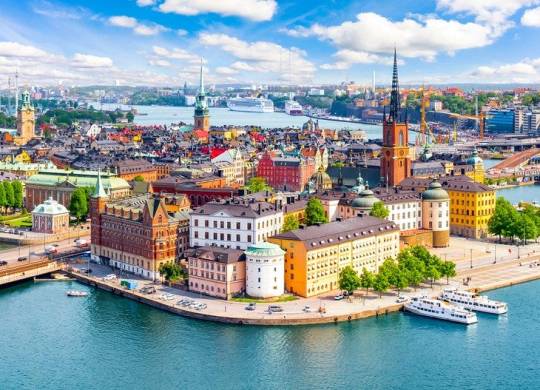
As the world grapples with the urgent need to combat climate change, several countries have emerged as leaders in the race towards achieving net zero emissions. These forward-thinking nations have not only set ambitious targets to reduce greenhouse gas emissions, but they have also incorporated sustainable development goals into their strategies. In this article, we will take a closer look at the top countries leading the charge towards a sustainable future and examine how they are aligning their efforts with the United Nations’ Sustainable Development Goals (SDGs). From innovative renewable energy projects to transformative policies.
Join us as we delve into the strategies and initiatives of these trailblazing countries, highlighting their commitment to not only mitigating climate change but also fostering social and economic progress. Discover how these nations are redefining what it means to achieve net zero emissions and how their sustainable development goals are shaping their journey towards a more sustainable future.
Why net zero emissions are important for the environment
Net zero emissions refer to the balance between the amount of greenhouse gases emitted into the atmosphere and the amount removed or offset. Achieving net zero emissions is crucial to combating climate change and its devastating effects on the environment. By reducing greenhouse gas emissions to net zero, we can stabilize the global temperature increase and prevent catastrophic consequences such as extreme weather events, rising sea levels, and loss of biodiversity.
The transition to net zero emissions requires a holistic approach that encompasses various sectors such as energy, transportation, agriculture, and industry. It involves implementing renewable energy sources, improving energy efficiency, adopting sustainable land-use practices, and promoting circular economies. By embracing these strategies, countries can not only mitigate climate change but also create green jobs, enhance energy security, and improve public health.
The role of sustainable development goals in achieving net zero emissions
The United Nations’ Sustainable Development Goals (SDGs) provide a comprehensive framework for countries to address the interconnected challenges of sustainable development, including climate change. The SDGs consist of 17 goals, each with specific targets to be achieved by 2030. These goals encompass a wide range of issues, including poverty eradication, gender equality, clean energy, sustainable cities, and climate action.
In the context of achieving net zero emissions, sustainable development goals play a crucial role. They provide countries with a roadmap to integrate climate action into their overall development strategies. By aligning their efforts with the SDGs, countries can ensure that their transition to net zero emissions is socially inclusive, economically viable, and environmentally sustainable.
Exploring the top 5 countries leading the race to net zero emissions

1. Sweden
Sweden has emerged as a global leader in the race towards net zero emissions. With a strong commitment to sustainable development, this country has set ambitious targets to reduce greenhouse gas emissions and transition to renewable energy sources. Their sustainable development goals include achieving universal access to clean energy, promoting sustainable agriculture, and building resilient infrastructure.
To achieve these goals, Sweden has implemented various initiatives and policies, including:
1. Heavy investments in renewable energy projects, such as wind and solar farms.
2. Implementation of energy efficiency measures across different sectors.
3. Adoption of carbon pricing mechanisms to incentivize emission reductions and promote low-carbon technologies.
These efforts have led to significant outcomes:
1. Reduction of greenhouse gas emissions.
2. Creation of new job opportunities.
3. Stimulated economic growth.
2. Norway
Norway is another frontrunner in the race towards net zero emissions. They have recognized the importance of sustainable development and have integrated it into their national policies and strategies. Their sustainable development goals include promoting sustainable cities and communities, ensuring access to affordable and clean energy, and taking urgent action to combat climate change.
To achieve these goals, Norway has implemented a range of initiatives, including:
1. Investment in public transportation systems to diminish vehicle emissions.
2. Encouragement of electric vehicle use through incentives and infrastructure development.
3. Implementation of energy efficiency programs in buildings and industries, resulting in reduced energy and greenhouse gas emissions.
4. Active participation in international collaborations to share best practices and expedite the transition to a low-carbon economy.
3. Denmark
Denmark has demonstrated a strong commitment to sustainable development and has made significant progress towards achieving net zero emissions. Their sustainable development goals encompass a wide range of areas, including affordable and clean energy, sustainable consumption and production, and climate action.
To achieve these goals, Denmark has implemented innovative policies and initiatives, which include:
Renewable Energy Projects:
1. Investment in large-scale solar and wind farms.
2. Implementation of energy efficiency measures within buildings and industries.
Sustainable Land-Use Practices:
1. Adoption of reforestation and afforestation to absorb carbon dioxide from the atmosphere.
Positive Outcomes:
1. Reduction of greenhouse gas emissions.
2. Enhancement of energy security.
3. Improvement of air quality.
4. Switzerland
Switzerland has emerged as a leader in sustainable development and has made significant strides towards achieving net zero emissions. Their sustainable development goals include promoting sustainable economic growth, ensuring access to affordable and clean energy, and taking urgent action to combat climate change.
To achieve these goals, Switzerland has implemented transformative policies and initiatives, including:
Investment in Renewable Energy:
1. Emphasis on renewable energy sources like solar and wind power.
2. Implementation of energy efficiency measures within buildings and industries.
Sustainable Transportation Systems:
1. Promotion of electric vehicles.
2. Development of efficient public transportation networks.
Positive Outcomes:
1. Reduction of greenhouse gas emissions.
2. Creation of new job opportunities.
3. Stimulation of economic growth.
5. Austria
Austria is at the forefront of the race towards net zero emissions. Their sustainable development goals encompass a wide range of areas, including affordable and clean energy, sustainable cities and communities, and climate action.
To achieve these goals, Austria has implemented bold initiatives and policies, which include:
Investment in Renewable Energy:
1. Heavy investment in renewable energy projects, including offshore wind farms and solar power installations
Energy Efficiency Measures:
1. Implementation of energy efficiency measures across various sectors
2. Reduction of energy consumption and greenhouse gas emissions
Sustainable Transportation Systems:
1. Promotion of electric vehicles
2. Development of cycling infrastructure
Positive Outcomes:
1. Reduction of greenhouse gas emissions
2. Improvement of air quality
3. Enhancement of the quality of life for citizens
Key takeaways and lessons from the top country’s efforts

The efforts of the top countries leading the race to net zero emissions provide valuable lessons and insights for the global community. Firstly, their commitment to sustainable development goals has been instrumental in driving their transition to a low-carbon economy. By integrating climate action into their overall development strategies, these countries have ensured that their efforts are comprehensive and sustainable.
Secondly, international collaboration has played a crucial role in accelerating the transition to net zero emissions. The exchange of knowledge, best practices, and technologies has enabled countries to learn from each other and implement effective strategies. It is essential for countries to collaborate and support each other in achieving their sustainable development goals and mitigating climate change.
Lastly, the top countries’ efforts have demonstrated that achieving net zero emissions is not only crucial for the environment but also beneficial for social and economic progress. The transition to a low-carbon economy has created new job opportunities, enhanced energy security, and improved public health. It is a win-win situation that enables countries to address climate change while fostering sustainable development.
The importance of international collaboration for achieving net zero emissions
The transition to net zero emissions requires global cooperation and collaboration. No single country can achieve this goal alone. It is crucial for countries to work together, share knowledge and resources, and support each other in their efforts to mitigate climate change.
International collaboration can take various forms, including sharing best practices, technology transfer, financial support, and capacity building. By collaborating, countries can accelerate the transition to a low-carbon economy and achieve their sustainable development goals more effectively.
Furthermore, international collaboration can foster innovation and drive the development of new technologies and solutions. By pooling resources and expertise, countries can overcome common challenges and find innovative solutions to mitigate climate change.
Conclusion: The future of net zero emissions and sustainable development goals
The top countries leading the race to net zero emissions have shown that achieving this goal is not only possible but also beneficial for social, economic, and environmental progress. Their efforts to align with the United Nations’ Sustainable Development Goals have ensured that their transition to a low-carbon economy is holistic and inclusive.
As the world faces the urgent need to combat climate change, it is crucial for more countries to follow in the footsteps of these trailblazing nations. By setting ambitious targets, implementing transformative policies, and collaborating internationally, countries can pave the way for a greener and more sustainable future.
The journey towards net zero emissions and the achievement of sustainable development goals requires collective action and a commitment to long-term change. By working together, countries can create a world where economic prosperity and environmental sustainability go hand in hand. It is up to us to make the necessary changes and build a better future for generations to come.
#10 simple ways to reduce your carbon footprint#co2 emissions#carbon footprint calculation#carbon footprint#carbon credit price today in india#sustainability reporting#net zero emissions
0 notes
Text
The Ultimate Guide to Zero Waste: Simple Steps to a Cleaner Planet

Why Zero Waste Matters More Than Ever
Let’s be real—our planet is drowning in trash. Landfills are overflowing, plastic is choking our oceans, and fast fashion? It’s an environmental nightmare. But here’s the good news: we can do something about it.
March 30th is International Zero Waste Day, a global wake-up call to rethink the way we consume and dispose of things. So, are you ready to make a real difference? Let’s dive into what zero waste is all about and how you can join the movement!
The Waste Crisis: The Hard Truth (And Why It’s Time to Act)
Every year, we dump billions of tons of waste into the environment. And guess what? It’s getting worse.
By 2050, municipal solid waste could hit a whopping 3.8 billion tons if we don’t change course.
2.7 billion people still don’t have proper waste collection. Imagine all that trash just sitting there.
The fashion industry alone is responsible for 8% of global greenhouse gas emissions. Yikes.
Every single second, a garbage truck’s worth of clothes gets burned or buried in landfills.
The textile industry gulps down 215 trillion liters of water every year. That’s a lot of wasted H2O.
We can’t afford to keep living like this. So, what can we do? Let’s start by tackling one of the biggest culprits: fashion.
Fashion’s Dirty Little Secret: Your Clothes Might Be Polluting the Planet
Yep, that cute $10 t-shirt you bought last week? It has a hidden cost. The fast fashion industry is a major contributor to pollution, and we’re all part of the problem. But the good news? We can also be part of the solution.
Here’s how to make your wardrobe more sustainable:
Buy Less, Choose Better – Invest in quality pieces that last instead of cheap, throwaway fashion.
Repair & Repurpose – Got a tear? Fix it. Outgrown a piece? Upcycle it into something new.
Shop Second-Hand – Thrift stores and clothing swaps are gold mines for unique finds.
Support Ethical Brands – Look for companies that use sustainable materials and fair labor practices.
Fun fact: If you double the life of your clothes, you can cut their carbon footprint by 44%. That’s huge!
Zero Waste Living: Small Changes, Big Impact
The idea of going “zero waste” might sound extreme, but it’s really about making simple swaps that add up over time. Here are some easy ways to cut down on waste:
Ditch Single-Use Plastics – Reusable water bottles, coffee cups, and shopping bags are your new best friends.
Compost Your Food Scraps – Less waste in landfills, more nutrients for the soil. Win-win.
Choose Better Packaging – Look for products with biodegradable or recyclable packaging.
Refill, Don’t Repurchase – Many stores now have refill stations for shampoo, detergent, and even snacks.
Swap Disposable for Reusable – Stainless steel straws, cloth napkins, and silicone food bags are game-changers.
These little shifts might not seem like much, but trust me—they make a massive difference.
The Big Picture: How Businesses & Governments Can Step Up
Let’s be honest—consumers can only do so much. Big businesses and governments need to step up too. Here’s how they can help:
Businesses Should:
Design products that last (instead of ones that break in a year).
Switch to circular business models, where items get reused, repaired, or recycled.
Invest in sustainable materials and reduce waste from production.
Governments Must:
Hold companies accountable with Extended Producer Responsibility (EPR) laws.
Regulate toxic chemicals in manufacturing.
Invest in better recycling infrastructure.
If businesses and policymakers do their part, we’ll have a much better shot at tackling this crisis.
International Zero Waste Day: A Global Call to Action
Every year on March 30th, the world comes together to shine a spotlight on zero waste. This initiative, led by the United Nations, supports the 2030 Agenda for Sustainable Development, particularly these two key goals:
SDG 11: Making cities and communities sustainable.
SDG 12: Ensuring responsible consumption and production.
Governments, businesses, and everyday people (like you!) are encouraged to take action against waste. And guess what? It starts with small, everyday choices.
Ready to Join the Zero Waste Movement? Here’s How You Can Start
You don’t need to be perfect. Just start somewhere. Here are a few easy ways to reduce waste in your daily life:
✅ Say no to single-use plastics ✅ Compost your food scraps ✅ Support brands that prioritize sustainability ✅ Spread awareness—talk to friends and family about zero waste ✅ Take the Zero Waste Pledge and commit to small but meaningful changes
🌍 Together, we can create a world where waste is minimized, resources are valued, and our planet thrives. 🌍
Ready to take action? Pledge to reduce waste today!
Final Thoughts: Let’s Be Part of the Solution
We can’t ignore the waste crisis any longer. But instead of feeling overwhelmed, let’s take action—one step at a time. Whether it’s swapping out plastic bags for reusable ones, repairing your clothes, or encouraging businesses to be more sustainable, every effort counts.
Let’s stand together for zero waste and a healthier planet.
🔗 Share this article and spread the word!
4 notes
·
View notes
Text
The Green Revolution: How Eco-Friendly Technology is Changing the Game
Welcome back to GreenLife Insight, your go-to source for all things eco-conscious living! In our previous blogs, we delved into the healing wonders of ecotherapy and offered you 10 simple ways to kickstart your sustainable journey. Today, we're diving headfirst into the world of eco-friendly technology and how it's reshaping our planet for the better.
The Age of Eco-Tech
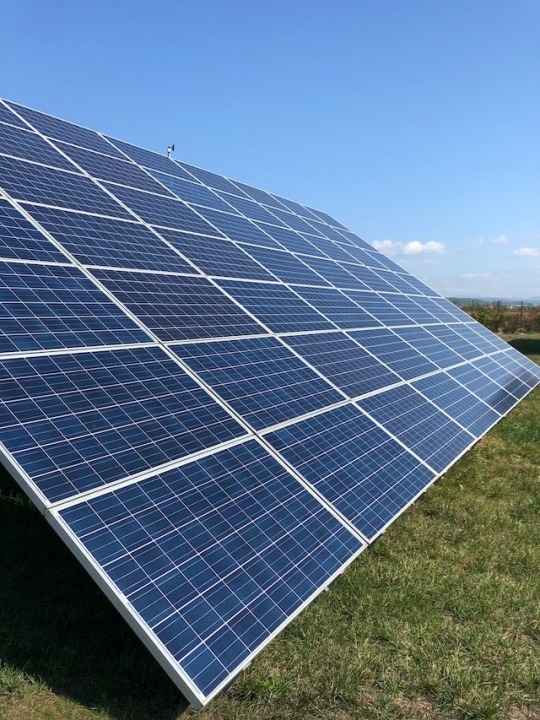
Solar panels have become a symbol of clean energy and reduced carbon footprint.
In the past decade, we've witnessed an incredible surge in eco-conscious technology. From solar panels adorning rooftops to electric vehicles silently gliding through our streets, the age of eco-tech is upon us. It's not just about gadgets; it's a movement that promises a greener, healthier future for our planet.
Solar Energy: Powering the Sustainable Way
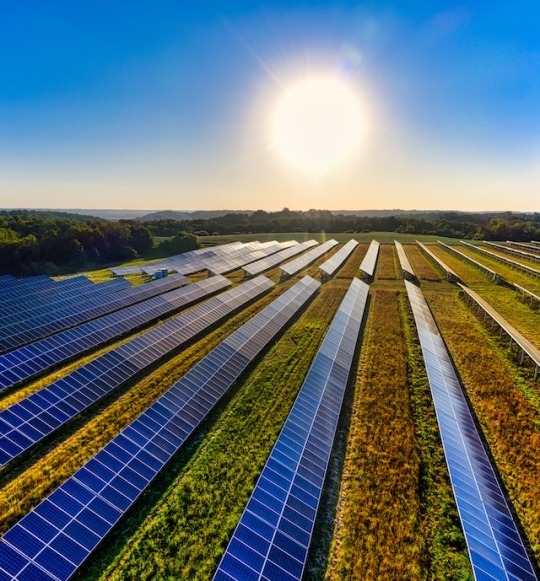
Solar farms are harnessing the power of the sun to generate clean energy.
Solar energy is at the forefront of this revolution. Solar panels, which convert sunlight into electricity, have become increasingly accessible to homeowners and businesses alike. They reduce our reliance on fossil fuels, lower electricity bills, and help combat climate change.
Electric Vehicles: Driving Towards a Greener Tomorrow

Electric cars are not only efficient but also eco-friendly, producing zero tailpipe emissions.
Electric vehicles (EVs) are another key player in the eco-tech revolution. They produce zero tailpipe emissions, reduce air pollution, and are quieter than traditional cars. With advancements in battery technology, range anxiety is becoming a thing of the past.
Smart Homes: Effortless Sustainability

Smart homes use technology to optimize energy consumption, reducing waste.
The concept of smart homes is also gaining traction. These homes use technology to optimize energy consumption, reducing waste and lowering utility bills. From smart thermostats that learn your preferences to energy-efficient appliances, every aspect of daily life can now be eco-conscious.
The Power of Sustainable Innovation

Innovators are continually developing eco-friendly tech solutions to combat climate change.
Innovation is the driving force behind this green revolution. Engineers, scientists, and entrepreneurs are constantly developing new solutions to combat climate change. From wind farms to biodegradable materials, the possibilities are endless.
Join the Movement
The green revolution is in full swing, and you can be a part of it. Embrace eco-friendly technology, reduce your carbon footprint, and help preserve the planet for future generations. Stay tuned to GreenLife Insight for more insights into sustainable living and the latest in eco-tech.
Remember, the future is green, and together, we can make a world of difference.
---
I hope you enjoyed this blog post about the exciting developments in eco-friendly technology. If you have any questions or would like more information about any of the topics discussed, please feel free to leave a comment below. Your feedback and ideas are always welcome! Stay tuned for more GreenLife Insight blogs coming your way soon.
#echotech#green#solar energy#electric vehicles#life#sustainability#innovation#renewable resources#ecofriendly
11 notes
·
View notes
Text
Harnessing the Earth’s Energy: Earth Tubes - How They Work & Cut Energy Costs
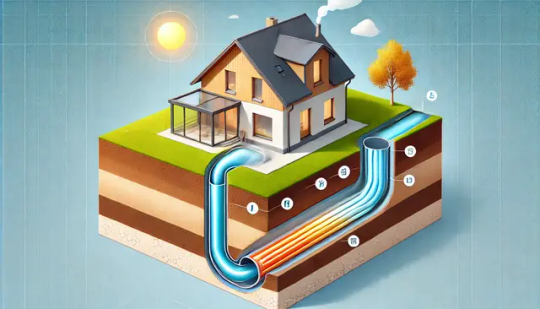
Introduction
Looking for a smarter way to heat and cool your home without relying on energy-hungry HVAC systems? Earth tube systems offer a powerful, eco-friendly alternative. By harnessing the ground’s stable temperature, earth tubes naturally regulate indoor air—keeping you cool in summer and warm in winter—all while slashing energy costs by up to 50%. This passive ventilation system uses underground pipes to pre-condition incoming air, reducing your home’s reliance on traditional heating and cooling methods. Whether you’re building an off-grid home or simply looking to cut your carbon footprint, earth tubes are a practical solution for sustainable living.
Understanding the Earth Tube System
An Earth Tube System is a form of geothermal ventilation that uses underground pipes to naturally heat or cool incoming air. These pipes are typically buried 1.5 to 3 meters (5 to 10 feet) below the surface—at a depth where the ground temperature remains stable year-round. As air travels through the system, it absorbs the earth’s temperature: cooling down in the summer and warming up in the winter. This passive heating and cooling process reduces the need for energy-intensive HVAC systems, making it an efficient, low-maintenance alternative for both homes and commercial buildings. By working with nature—not against it—earth tubes provide a sustainable, quiet, and cost-effective way to control indoor climate. How Earth Tube Systems Work – Step by Step Earth tubes use a simple yet powerful process to condition air before it enters your home. Here’s how it works: Air Intake Fresh outdoor air is pulled into the system through an above-ground intake vent, often fitted with a filter to keep out dust, pollen, and insects. This marks the beginning of the passive airflow process. Subterranean Heat Exchange The air moves through a network of pipes buried underground. As it travels: In summer, warm air is cooled by the surrounding soil. In winter, cold air is warmed by the earth’s natural heat. This underground passage leverages the stable ground temperature to pre-condition the air. Ventilation & Delivery Once the air reaches the end of the pipe system, it enters the building’s interior via the ventilation system. Some systems use small fans, while others rely purely on passive airflow. Optional exhaust vents may also be added to promote continuous circulation and maintain healthy indoor air quality. Efficiency and Sustainability Benefits of Earth Tube Systems One of the biggest advantages of earth tube systems is their ability to deliver eco-friendly heating and cooling with almost no energy input. Here's how they stand out: Energy Savings: By using the ground’s stable temperature, earth tubes dramatically reduce the need for mechanical HVAC systems. This can cut heating and cooling costs by 30–50%, depending on climate and system design. Sustainability: Earth tubes are a form of passive geothermal ventilation, relying on renewable thermal energy from the ground. No fuel, no emissions—just natural airflow. Improved Indoor Air Quality: Since fresh air is pulled from outside and filtered through underground pipes, the system helps regulate humidity and reduce indoor pollutants. Minimal Maintenance: With no moving parts or compressors, earth tube systems are quiet, long-lasting, and cost-efficient to maintain over time. These benefits make earth tubes a low-energy, sustainable cooling and heating solution for homeowners and eco-conscious builders alike. Advanced Insights and Earth Tube Design Tips Designing an efficient earth tube system involves more than just digging trenches and laying pipes. To get the most from this geothermal airflow system, several design factors must be considered: Pipe Placement and Depth: For optimal performance, pipes should be buried 1.5 to 3 meters (5 to 10 feet) deep—where ground temperatures remain constant year-round. Pipe Length and Layout: The length and shape of the system (looped, linear, or branched) should match your building's size, climate zone, and desired airflow rate. Material Selection: Use durable, thermally conductive materials such as HDPE or PVC, which resist corrosion and optimize heat exchange. Soil and Climate Considerations: Local soil type, moisture levels, and seasonal temperature swings can all affect system performance. A basic thermal analysis of the soil is recommended. For in-depth guides on earth tube planning and real-world case studies, visit: Natural Resources Canada GreenBuildingAdvisor Home in the Earth – Earth Tube Design As passive HVAC solutions grow in popularity, earth tubes continue to be adapted for off-grid homes, eco-conscious commercial buildings, and agricultural structures—offering a smart, low-cost path to sustainable indoor climate control.

image of earth tube system, here is intresting article from same topic: Practical Example: Installing an Earth Tube System Installing an Earth Tube Ventilation System in your home or off-grid cabin involves careful planning, but the rewards in energy savings and environmental benefits are worth the effort. Here's a step-by-step guide to understanding the process and its potential impact: Installation Process: - Designing the System: The first step is to calculate the required length and depth of the pipes. This depends on the size of the building, expected air exchange needs, and the local climate. Typically, pipes are buried at depths where the ground temperature remains stable year-round—usually 1.5–3 meters (5–10 feet). For accurate calculations, a thermal analysis of the soil and an assessment of seasonal temperature variations are essential. For more detailed guidance on designing Earth Tube Systems, including material selection and installation techniques, visit Home in the Earth. Tip: Avoid placing pipes near tree roots or septic systems. - Selecting the Pipe Material: High-quality, thermally conductive materials such as high-density polyethylene (HDPE) are used for the pipes. These materials ensure durability, resist corrosion, and provide effective heat exchange. The diameter and arrangement of the pipes (e.g., looped or linear) are tailored to the building's ventilation requirements. - Determining the Airflow Requirements: The system must be designed to provide sufficient airflow for the building. Airflow rates depend on the size of the property and the number of occupants. For example, a typical family home might require pipes with a combined length of 30–50 meters (98–164 feet) to achieve efficient ventilation. - Integration with Ventilation System: The Earth Tube System is connected to the building's ventilation system to ensure seamless air circulation. Proper integration involves installing fans or passive airflow mechanisms to move the conditioned air from the pipes into the home effectively. A monitoring system can be added to optimize performance and ensure the system operates efficiently. Energy Savings Earth Tube Systems can reduce energy consumption for heating and cooling by 30–50%. Actual energy savings depend on regional energy prices and consumption habits. Below are examples of potential savings based on different electricity prices and annual consumption levels: Consumption Type Annual Consumption (kWh) $0.10/kWh Savings ($) $0.20/kWh Savings ($) $0.30/kWh Savings ($) Small Apartment 5000 $150 $300 $450 Family Home 10000 $300 $600 $900 Large Household 15000 $450 $900 $1,350 Farmhouse 20000 $600 $1,200 $1,800 Small Business 40000 $1,200 $2,400 $3,600 These savings can vary significantly based on local energy prices, the efficiency of the installed system, and individual consumption habits. Bonus Insight: Who Should Consider Earth Tubes? Earth tube systems are ideal for: Off-grid homes Eco-conscious homeowners Rural or agricultural buildings Passive house and green building projects If you’re planning a sustainable renovation or building from scratch, this low-energy solution could future-proof your home. Conclusion Earth Tube Systems exemplify the ingenuity of harnessing natural geothermal energy for sustainable living. By utilizing the Earth's stable underground temperatures, these systems provide an energy-efficient, low-maintenance, and environmentally friendly alternative to conventional heating and cooling methods. Whether you’re constructing a new home or upgrading to a more eco-friendly climate control solution, Earth Tube technology offers numerous benefits, including: Reduced energy consumption, leading to lower electricity and heating costs. Minimal maintenance requirements, as the system has no moving parts. Improved indoor air quality, thanks to natural ventilation and passive cooling effects. Lower environmental impact, as it reduces reliance on fossil fuels and decreases greenhouse gas emissions. As interest in sustainable architecture and off-grid living grows, Earth Tube Systems are becoming an increasingly viable solution for residential, commercial, and agricultural applications. With ongoing advancements in materials and system design, the future of this passive climate control technology looks promising. Explore More Sustainable Innovations Interested in learning more about innovative solutions for sustainable living? Check out these related articles: - Solar-Powered Water Purification: A 2024 Innovation for Cabins - Harnessing the Sun from the Peaks: The Rise of Mountain-Installed Solar Panels Subscribe to our newsletter for expert insights and updates on innovative green technologies. Source List - Natural Resources Canada: New Energy-Efficient Way to Heat and Cool Buildings - GreenBuildingAdvisor: All About Earth Tubes - Home in the Earth: Earth Tube Design for Earth-Sheltered Homes - Designing Energy-Efficient HVAC Systems – HVAC World - Data provided by Energy.gov - layakarchitect.com If you liked this one, please check out this article also: https://www.ecotechnews.world/transitioning-your-home-to-alternative-energy-solutions/ Read the full article
0 notes
Text
Love Your Body with Rui Haven – Discover 100% Natural, Vegan Bath & Body Products
At Rui Haven, we believe that loving your body begins with choosing what’s best for your skin and your well-being. Our mission is simple yet powerful: to offer 100% natural, vegan, and eco-friendly skincare solutions that not only enhance your daily routine but also promote holistic wellness and relaxation. Through ethically crafted body oils, exfoliating scrubs, and revitalizing skincare essentials, Rui Haven invites you to indulge in beauty rooted in nature and purpose.
Enjoy 10% off your first purchase with code WELCOME10, and get free delivery on all orders over £50.
Sustainable Bath and Body Care for the Mind, Body, and Planet
In today’s world, mindful self-care must go hand in hand with sustainability. At Rui Haven, every product is thoughtfully formulated and packaged to reflect our commitment to the Earth. From recyclable containers to plastic-free shipping materials, our entire process aligns with our mission of offering sustainable bath and body care.
Our ingredients are 100% natural, plant-based, and sourced with integrity. We steer clear of synthetic fragrances, parabens, sulfates, and animal testing. Instead, we harness the power of botanical oils, essential minerals, and nutrient-rich plant extracts to nurture your skin gently and effectively.
Why Choose Eco-Friendly Skincare Solutions?
Eco-friendly skincare solutions are more than a trend—they are a lifestyle change. Choosing Rui Haven means you're opting for:
Products that don’t pollute waterways or harm marine life.
Ingredients that are biodegradable and gentle on sensitive skin.
A brand that reduces its carbon footprint through minimalistic, recyclable packaging.
Vegan and cruelty-free ethics that respect both animals and nature.
Shop Natural Wellness Products Designed to Restore Balance
Our range of natural wellness products is carefully curated to turn your everyday routine into a sanctuary of serenity. Each formula is created with aromatherapeutic benefits in mind, helping you de-stress, unwind, and reconnect with your inner self.
Our Best-Selling Natural Products:
1. Revitalizing Body Oils
Infused with jojoba, sweet almond, and rosehip oils, our body oils absorb effortlessly, locking in moisture while leaving your skin radiant and smooth. Use them after your shower or add a few drops to your bath for a calming spa experience.
2. Exfoliating Body Scrubs
Made with organic sugar, Himalayan pink salt, and nourishing oils, our scrubs gently exfoliate dead skin cells while detoxifying and brightening your skin.
3. Hydrating Facial Elixirs
Lightweight and fast-absorbing, our facial oils are rich in antioxidants, helping to combat dryness, inflammation, and the early signs of aging.
4. Calming Bath Soaks
Our mineral bath blends, made with Epsom salt, lavender, and chamomile, soothe tired muscles and promote restful sleep.
When you shop natural wellness products with Rui Haven, you’re choosing formulations that are transparent, trustworthy, and tailored for results.
Give the Gift of Wellness with Rui Haven Gift Cards
Looking for a thoughtful, meaningful present for a loved one? Rui Haven Gift Cards are the perfect way to let someone special indulge in self-care on their own terms. Whether it’s for a birthday, holiday, or "just because," our gift cards can be used across the entire range of products.
Available in multiple denominations, Rui Haven Gift Cards are:
Instantly delivered via email, making last-minute gifting effortless.
Customizable with a personal message to add a heartfelt touch.
Redeemable sitewide, offering the receiver full freedom to choose their self-care essentials.
Show your appreciation in the most rejuvenating way possible—through the gift of radiant skin and relaxation.
Rui Haven – Vegan Beauty Brand Rooted in Wellness
We proudly stand as a Rui Haven - Vegan Beauty Brand with a purpose. Rui Haven is not just another skincare line—it’s a movement toward clean, ethical, and sustainable living. Our commitment to being a cruelty-free and vegan brand ensures no animal-derived ingredients or testing are involved in any stage of production.
We also partner with local suppliers and artisans to ensure fair labor practices and reduce transport emissions. Every Rui Haven purchase directly supports our goal of creating a wellness-driven beauty ecosystem where transparency, inclusivity, and environmental respect come first.
Our products are:
Dermatologically tested for safety.
Handcrafted in small batches to ensure premium quality.
Free from synthetic dyes, silicones, and artificial preservatives.
Join the Rui Haven Community
When you choose Rui Haven, you’re not just buying a product—you’re joining a like-minded community that values authenticity, sustainability, and self-love. We share wellness tips, skincare rituals, and ingredient spotlights to help you make the most of your journey.
Follow us on Instagram, Pinterest, and Facebook to stay connected and discover inspiration for your daily self-care practice. Don’t forget to sign up for our newsletter for exclusive offers, early product launches, and wellness insights delivered straight to your inbox.
Limited-Time Offer: 10% Off + Free Delivery
There’s never been a better time to start your natural skincare journey. Use code WELCOME10 at checkout to enjoy 10% off your first order and receive free UK delivery on all orders over £50.
Conclusion: Love Your Body Naturally with Rui Haven
True self-care begins with intentional choices. At Rui Haven, we’ve combined the best of nature, science, and ethical responsibility to deliver skincare that works—without compromise. From luxurious bath soaks to rejuvenating oils and scrubs, everything we create is designed to nurture your skin, calm your mind, and uplift your spirit.
Discover why so many are switching to Rui Haven – Vegan Beauty Brand that puts sustainable bath and body care at the heart of self-care. Feel the difference that nature makes—because you deserve products that love your body back.
1 note
·
View note
Text
0 notes
Text
How Solar Works: A Beginner’s Guide for Homeowners
Thinking about switching to solar but not quite sure how it all works? You’re not alone — many homeowners are excited about going green but want to understand what’s really happening on their roof.
Don’t worry — this guide breaks it down in simple, everyday language. Here’s everything you need to know about how solar works and how it can benefit your home. understanding Hitech Solar
☀️ Step 1: Sunlight Hits Your Solar Panels
It all starts with sunshine. When sunlight shines on your solar panels (also called photovoltaic or PV panels), they convert sunlight into direct current (DC) electricity.
These panels are made of silicon cells, which create an electric field when exposed to light — a bit like a permanent battery that's powered by the sun.
⚡ Step 2: The Inverter Converts DC to Usable Power
Your home doesn’t use DC electricity — it uses alternating current (AC). That’s where your solar inverter comes in. The inverter takes the DC electricity from your panels and converts it into AC electricity that your home appliances and devices can use.
There are a few types of inverters:
String inverters (most common)
Microinverters (one per panel — great for shaded roofs)
Hybrid inverters (can work with batteries)
🏠 Step 3: Powering Your Home
Now that your inverter has converted the solar energy into AC power, it flows into your home and powers everything — lights, fridge, TV, air con — just like normal.
And the best part? You’re using free electricity from the sun instead of paying your energy provider.
🔁 Step 4: Extra Power Goes Back to the Grid (or into a Battery)
Most homes won’t use all their solar power during the day — especially when you’re at work or school. So what happens to the extra energy?
You’ve got two options:
�� Feed-in Tariff (Grid Connection)
If you don’t have a battery, that extra energy is sent back to the electricity grid. Your retailer pays you a feed-in tariff — usually around 5–10 cents per kWh in 2025.
✅ Battery Storage
If you have a solar battery, the extra energy is stored for later use — like in the evening or during a blackout. This helps you use more of your own energy and rely less on the grid.
🧾 Step 5: You See the Savings on Your Power Bill
Your solar system runs automatically every day — no switches, no fuss. You’ll still be connected to the grid, but your electricity bill will show:
Less power purchased from the grid
Credits from solar exports (if applicable)
Most Sunshine Coast homes save 50–90% on their power bills depending on their usage and system size.
Bonus: Monitoring & Smart Apps
Many modern systems come with apps that show how much solar you’re generating, using, and exporting — in real time. This helps you track your savings, spot any issues, and get the most from your setup.
Common Questions
❓ Will solar work on cloudy days? Yes! Panels still generate power, just at a reduced output — typically 10–30% of their full capacity.
❓ Do I need to turn it on or off? Nope — your solar system is automatic. It turns on when the sun comes up and shuts down at night.
❓ What happens at night? Without a battery, you use power from the grid as usual. With a battery, you may use stored solar power.
Final Thoughts: Simple, Smart, and Sustainable
Solar energy isn’t just for tech experts — it’s an easy, affordable way to take control of your energy use and reduce your carbon footprint. Whether you're after lower bills, energy independence, or a greener lifestyle, solar power is a smart move for any homeowner.
0 notes
Text
7 Best Polyester Fabric Dye Options for Bold, Lasting Color
Understanding Polyester Fabric Dye
Polyester fabrics are known for their durability, wrinkle resistance, and quick-drying properties. Yet, dyeing polyester isn’t as simple as working with cotton or other natural fibers. Polyester is synthetic, so it often requires specialty dyes, such as disperse dyes.
In fact, disperse dyes are estimated to be 85% azo or anthraquinone dyes, which bind well to synthetic fibers for strong, long-lasting color. If you’ve ever wondered why some jerseys or athletic wear remain vibrant wash after wash, the secret often lies in using the right polyester fabric dye.

The global textile dye market is projected to reach $12.57 billion by 2027, growing at a compound annual growth rate (CAGR) of 6.8%. Amid this growth, there’s a growing focus on how dyes affect our environment. Textile dyeing accounts for around 20% of global water pollution, and producing one ton of fabric can require up to 200 tons of water. By understanding how polyester fabric dye works and exploring better, more sustainable options, you can make a positive impact on both your wardrobe and the planet.
Why Polyester Fabric Dye Matters for Bold Designs
Polyester is widely used in sports uniforms, activewear, and everyday clothing. Due to its synthetic nature, it needs a dye that can withstand the heat and chemical requirements necessary to bond color to the fibers. That’s why polyester fabric dye is crucial for vibrant, enduring shades. For anyone designing or revamping apparel, using the right dye is essential for achieving professional-level color quality.
Since the fashion industry contributes to about 10% of global carbon emissions—surpassing international flights and maritime shipping combined—many dye companies are exploring new ways to lower their ecological footprint. The textile industry currently uses about 43 million tons of chemicals annually, highlighting the importance of environmentally conscious approaches.
By choosing specialized polyester fabric dye from reputable brands, you can enjoy high-performance color while supporting attempts to reduce water and chemical usage.
7 Best Polyester Fabric Dye Options for Bold, Lasting Color
Choosing the best dye starts with knowing which brands focus on polyester. Below are seven options that provide bright results without sacrificing quality. Each has strengths that meet different needs, from quick home projects to professional-level designs.

Rit DyeMore Liquid Dye Rit Dye is a household name, and their DyeMore Liquid Dye is specifically made for synthetic fabrics like polyester and acrylic. According to one source, you can access over 250 color recipes, ensuring you’ll find the perfect hue. Rit DyeMore is known for ease of use: simply heat the water, mix the dye, and stir in your polyester item. It’s one of the most accessible products for beginners.
Jacquard iDye Poly Jacquard Products creates a wide variety of fabric dyes, and iDye Poly is specifically formulated for polyester, nylon, and other synthetic fibers. One key advantage is that iDye Poly dissolves in water with minimal mess—just drop the dye pack in. This product is popular with professionals who need bright hues without complicated processes. Always follow Jacquard’s iDye Instructions for best results.
Dystar Disperse Dyes Dystar is a major player in the textile industry, known for producing high-performance dyes. Their disperse dyes offer superb wash-fastness and color intensity. If you’re running a larger project or business, sourcing from Dystar could be beneficial because they emphasize sustainable solutions and innovative chemistry.
We aRe SpinDye Method While not a single dye product, We aRe SpinDye is a unique Swedish fashion tech company. Their coloring process for synthetic fibers dramatically reduces water usage by 75% and chemical usage by 90%, all while cutting energy consumption by 25% and CO₂ emissions by 30%. For brands looking to minimize their environmental impact, partnering with a service like We aRe SpinDye could help you achieve bold polyester colors sustainably.
Achroma Disperse Range Headquartered in Singapore, Achroma is known for its portfolio of dyes and specialty chemicals. Their disperse dye solutions provide deep, even coloration on polyester. For designers who value high-performance results, Achroma’s product line might be worth exploring. Many companies trust Achroma for consistent, industry-level finishes.
Atul Ltd Polyester Dyes Atul Ltd is an India-based company that has been influential in the textile dye market. With a conscious approach to environmental concerns, they produce dyes that meet various industry standards. Their polyester-focused dyes aim to minimize fading over time, ensuring your clothing stays vibrant longer.
Huntsman Textile Effects Range Huntsman offers a broad range of dyes and chemicals for the textile industry, including disperse dyes designed specifically for polyester. They focus on sustainability, performance, and color-fastness. If you’re looking for consistent results across large batches, Huntsman’s offerings are often trusted by major apparel manufacturers.
Sustainable Innovations in Polyester Fabric Dye
Even as polyester fabric dye helps us achieve bold designs, it’s important to think about the environmental impact. Textile dyeing is the second-largest water polluter globally, and non-eco-friendly processes can strain resources. Here are a few ways the industry is moving forward:
Digital Textile Printing: Dye-sublimation printing for polyester allows for vivid, continuous tones with photographic quality. Because sublimation printing transfers dye using heat, there’s often less water usage compared to traditional dyeing. Sublimation also results in fewer wasted materials, aligning with a reduced-waste approach.
Sustainable Dyeing Practices: From solution dyeing (where color is added to the polymer before fiber extrusion) to water-saving methods like We aRe SpinDye, companies are striving to cut down on the environmental cost. This shift matters because around 20% of global water pollution stems from textile dyeing alone.
Customization and Personalization: More people want one-of-a-kind clothing. This trend leads to smaller-batch dye projects, which can use modern dyes and digital tools efficiently. Advanced projects might involve tools like the Pantone Color Finder or Adobe Color, ensuring your final shade matches the exact look you have in mind.
Advancements in Dye Chemistry: New disperse dyes are becoming more colorfast while containing fewer harmful chemicals. Whether you’re a craft enthusiast or a large-scale designer, these developments promise a brighter future for polyester clothing.

Tips for Using Polyester Fabric Dye
When working with polyester dye, getting the most out of your color involves heating, timing, and selecting the right chemicals. Below are some tips that can help you succeed:
Proper Heat Polyester fibers need higher temperatures to open their pores and allow dye to penetrate. Ensure you maintain the recommended heat level throughout the dye bath. Most polyester-oriented dyes require near-boiling water, so a large stainless-steel pot is ideal.
Use Specialized Dye Regular all-purpose dyes don’t usually bond well with polyester. Always choose a polyester-specific dye, such as disperse dyes, to ensure vibrant color that doesn’t fade quickly.
Immerse and Stir Continuously stirring your material helps the dye disperse evenly. Elements like Rit Color Formulas Library can guide you on precise measurements, but consistent motion in the dye bath matters just as much.
Rinse Thoroughly After dyeing, rinse the fabric in warm water, then gradually cool to remove any unfixed dye particles. This prevents the dye from bleeding during future washes.
Tools and Resources to Help
To choose and apply colors with more confidence, consider these handy resources:
ColorSnap® Visualizer by Sherwin-Williams: Helps match real-world colors to a paint chart, useful for brainstorming.
Adobe Color: An online tool to craft color schemes, providing hex codes that guide your dye choices.
Pantone Color Finder: Ensures accurate color matching, especially helpful for professional projects.
Rit Color Formulas Library: Offers detailed recipes, including how to strip or fix colors in case you want to adjust your shade after a first attempt.
Jacquard’s iDye Instructions: Step-by-step guidelines specifically for Jacquard’s iDye line, valuable if you’re new to polyester dyeing.
Conclusion
Polyester fabric dye remains an essential part of creating athletic apparel, team uniforms, and bold everyday wear. While synthetic fibers resist ordinary dyes, specialized disperse formulations bond with polyester to deliver stunning, fade-resistant hues. By exploring the seven best dye options—from trusted brands like Rit and Jacquard to eco-conscious innovations like We aRe SpinDye—you can find the perfect match for your next project.
As sustainability becomes more critical, we’re seeing new technologies that reduce water consumption and chemical usage, all while producing vivid color outcomes. Whether you’re a hobbyist seeking bright team colors or a large-scale designer aiming for environmentally responsible methods, polyester fabric dye can help you craft apparel that looks fantastic and holds up well over time.
Remember to rely on specialized tools, follow instructions carefully, and stay updated on new dye chemistry developments. With the right approach, you’ll be able to enjoy bold, lasting colors in your polyester garments, now and for the future.
1 note
·
View note
Text
Discover the Real Taste of Soya Chaap with Vezlay Foods
Vezlay Foods has redefined the way we experience Soya Chaap, bringing a delightful fusion of vegan food innovation and authentic taste. As the demand for plant-based alternatives continues to surge globally, Vezlay Foods emerges as a trailblazer in offering premium-quality, high-protein Soya Chaap that caters not just to vegans but to every food enthusiast seeking healthy, delicious, and sustainable options.

The Rise of Vegan Food Culture in India
The shift towards Vegan Food is no longer a trend — it is a lifestyle. With increasing awareness about health, environmental impact, and animal welfare, consumers are actively looking for alternatives that match the traditional taste while being 100% plant-based. Soya Chaap is one such revolutionary product that has taken Indian cuisine by storm, and Vezlay Foods is leading this transformation with its ready-to-eat and easy-to-cook offerings.
What Makes Vezlay Soya Chaap Stand Out?
At Vezlay Foods, quality is not just a benchmark — it is a promise. Their Soya Chaap is crafted using advanced food processing technology to ensure:
High protein content
Low fat and cholesterol-free composition
Authentic taste and meaty texture
100% vegan and gluten-free ingredients
This makes it an excellent alternative for those transitioning from meat to vegan food, without compromising on the taste or texture.
Health Benefits of Vezlay Soya Chaap
Incorporating Vezlay’s Soya Chaap into your diet is not only a culinary delight but also a smart health move. Here’s why:
Rich in protein: Ideal for muscle building and repair
Low in saturated fats: Supports heart health
High in fiber: Aids digestion and promotes gut health
Zero cholesterol: Great for managing cholesterol levels
No added preservatives: Ensures clean and conscious eating
Delicious Soya Chaap Varieties by Vezlay Foods
Vezlay offers a wide array of Soya Chaap products to suit every palate and cooking style:
1. Ready-to-Eat Soya Chaap
Perfect for quick meals, these come pre-cooked and only need heating. Pair them with mint chutney or toss into your wraps for a protein-packed snack.
2. Tandoori Soya Chaap
Smoky, spicy, and utterly satisfying — this version captures the essence of traditional tandoori flavor, offering a perfect appetizer for your next party.
3. Masala Soya Chaap
Loaded with rich Indian spices, this chaap is a treat for curry lovers. Serve it with roti or rice for a wholesome meal.
4. Soya Seekh Kabab
Another innovative offering from Vezlay, the Soya Seekh Kabab blends the taste of street-style kebabs with healthy vegan goodness.
How to Cook Vezlay Soya Chaap: Simple Recipes for Every Kitchen?
Vezlay’s products are designed for convenience and versatility. Whether you’re a seasoned chef or a kitchen newbie, preparing Soya Chaap is quick and effortless.
Grilled Soya Chaap Skewers
Ingredients:
Vezlay Tandoori Soya Chaap
Bell peppers
Onions
Olive oil
Spices (optional)
Method:
Skewer the chaap with chopped vegetables.
Brush with olive oil and spices.
Grill for 10–12 minutes until golden.
Serve hot with lemon wedges.
Creamy Soya Chaap Curry
Ingredients:
Vezlay Masala Soya Chaap
Tomatoes, onions, and cashew paste
Spices and herbs
Coconut milk or cream (vegan)
Method:
Sauté onions and tomatoes with spices.
Add cashew paste and coconut milk.
Add chopped Soya Chaap and simmer for 15 mins.
Garnish with coriander and serve with naan.
Why Fitness Enthusiasts Prefer Vezlay’s Soya Chaap
For gym-goers, athletes, and those on high-protein diets, Soya Chaap from Vezlay Foods is a reliable protein source. Unlike meat, it digests easily, has zero trans fats, and blends well in protein-packed recipes like stir-fries and salads. It’s a win-win for muscle gain and heart health.
Sustainability Matters: Why Vezlay Foods is a Greener Choice
Choosing vegan food like Soya Chaap is an eco-conscious decision. It significantly reduces the carbon footprint associated with traditional meat production. Vezlay Foods ensures that their production processes are environmentally responsible, supporting a more sustainable and cruelty-free planet.
Trusted by Thousands Across India
Vezlay Foods has earned the trust of households, restaurants, and caterers across India. Their dedication to quality, innovation, and ethical practices has positioned them as a household name in the vegan food space. Whether it’s for your everyday meal or a gourmet weekend spread, Vezlay’s Soya Chaap promises unmatched taste and nutrition.
The Future of Plant-Based Eating Starts Here
Vezlay Foods is more than a food company — it’s a movement. By choosing their Soya Chaap, you are not just eating smarter, you are supporting a future that is healthier, kinder, and more delicious.
Soya Chaap, when done right, is a game-changer in the world of Vegan Products. Vezlay Foods delivers on every front — taste, health, convenience, and sustainability. It’s time to explore the real flavor of plant-based eating with Vezlay and take your meals to the next level.
0 notes
Text
10 Easy Ways to Reduce Your Carbon Footprint
Make a Positive Impact on Climate Change
10 August, 2023
WOCE Team

Are you looking for simple ways to combat climate change and reduce your carbon footprint? Look no further! In this article, we have compiled a list of 10 easy and effective strategies that you can implement in your daily life to make a positive impact on our planet.
With the growing concern over the environment, it's essential that we all take responsibility for our actions and make sustainable choices. From reducing energy consumption and embracing renewable energy sources to conserving water and practicing mindful consumption, there are numerous ways we can contribute to a greener future.
By incorporating these easy-to-follow tips into your routine, you'll not only be helping to combat climate change but also saving money and leading a healthier lifestyle. So, whether you're a seasoned environmentalist or just starting your eco-friendly journey, this article is filled with practical advice and actionable steps that anyone can take.
Start making a difference today by reducing your carbon footprint and creating positive change for the planet. Together, we can build a sustainable future for generations to come.
The Importance of Reducing Carbon Footprint

Reducing our carbon footprint is not only essential for the environment but also for our own well-being. By making sustainable choices, we can save money, improve air quality, and foster a healthier lifestyle. Additionally, taking action to reduce our carbon emissions sends a powerful message to policymakers and corporations, urging them to prioritize environmental sustainability.
Simple Lifestyle Changes to Reduce Carbon Footprint
1. Embrace a plant-based diet: The food industry is a significant contributor to greenhouse gas emissions. By reducing our consumption of meat and dairy products, we can significantly reduce our carbon footprint. Plant-based alternatives not only have a lower environmental impact but are also healthier for us.
2. Reduce, reuse, recycle: The mantra of waste management still holds true. By reducing the amount of waste we generate, reusing items whenever possible, and recycling materials, we can conserve resources and minimize the emissions associated with waste disposal.
3. Conserve energy at home: Simple actions like turning off lights when leaving a room, unplugging electronics when not in use, and using energy-efficient appliances can make a significant difference. Additionally, insulating your home and using natural lighting can help reduce energy consumption.
Energy-Efficient Practices at Home
4. Upgrade to LED lighting: LED bulbs are not only more energy-efficient but also last longer than traditional incandescent bulbs. By making this switch, you can save money on your energy bills and reduce your carbon footprint.
5. Optimize heating and cooling: Proper insulation, sealing gaps, and using programmable thermostats can help regulate indoor temperatures efficiently. Lowering the thermostat by just a few degrees during winter and raising it during summer can result in significant energy savings.
6. Use energy-efficient appliances: When purchasing new appliances, look for the Energy Star label. These appliances are designed to consume less energy without compromising performance.
Sustainable Transportation Options
7. Choose public transportation: Opting for public transportation, such as buses, trains, or trams, can significantly reduce your carbon emissions. If public transport is not accessible, carpooling or ride-sharing apps can be eco-friendly alternatives.
8. Walk or bike: For short distances, consider walking or biking instead of driving. Not only will you reduce your carbon footprint, but you'll also improve your health and fitness.
9. Invest in electric vehicles: If you're in the market for a new car, consider purchasing an electric vehicle (EV) or a hybrid. EVs produce zero tailpipe emissions and are becoming increasingly accessible and affordable.
Recycling and Waste Management
10. Follow proper recycling practices: Educate yourself on what can and cannot be recycled in your area. Rinse containers, separate recyclables, and dispose of hazardous waste responsibly. Remember, recycling is not a cure-all, so reducing and reusing should always be the first priority.
Conserving Water and Reducing Water Footprint
11. Fix leaks: A dripping faucet or a leaking pipe may seem insignificant, but they can waste hundreds of gallons of water every month. Regularly check for leaks and fix them promptly.
12. Install water-efficient fixtures: Install low-flow showerheads, faucets, and toilets to reduce water usage. These fixtures can significantly lower your water bills and conserve this precious resource.
Supporting Renewable Energy Sources
14. Switch to renewable energy: Consider installing solar panels on your property to generate clean, renewable energy. If that's not possible, explore options to purchase renewable energy from your utility provider.
15. Support renewable energy initiatives: Advocate for renewable energy policies and support organizations and businesses that prioritize clean energy. Encourage your local community to invest in wind, solar, and hydroelectric projects.
Advocating for Climate Action
16. Stay informed: Keep up-to-date with the latest climate change research and news. Educate yourself and engage in conversations about climate change with friends, family, and colleagues.
17. Vote for climate-conscious leaders: Support political candidates who prioritize climate change and have a history of advocating for environmental policies. Use your vote to influence climate action.
18. Join or support environmental organizations: Get involved with local environmental organizations and contribute your time, skills, or donations. These organizations play a crucial role in promoting sustainability and driving change.
13. Collect rainwater: Installing a rain barrel to collect rainwater can be used for watering plants or washing your car. This simple practice can help reduce strain on municipal water supplies.
Conclusion: Taking Action for a Sustainable Future

By implementing these 10 easy ways to reduce your carbon footprint, you can make a positive impact on climate change. Remember, every action counts, no matter how small. Whether it's adopting a plant-based diet, conserving energy at home, or supporting renewable energy sources, each step towards sustainability contributes to a brighter and greener future for all.
Start making a difference today and inspire others to join you on this crucial journey towards a sustainable future. Together, we can create a world where future generations can thrive in harmony with nature. Let's reduce our carbon footprint and make a positive impact on climate change!
#10 simple ways to reduce your carbon footprint#co2 emissions#carbon footprint calculation#carbon footprint#carbon credit price today in india#sustainability reporting#net zero emissions
0 notes
Text
Eco-Friendly Housekeeping Options in Dade City
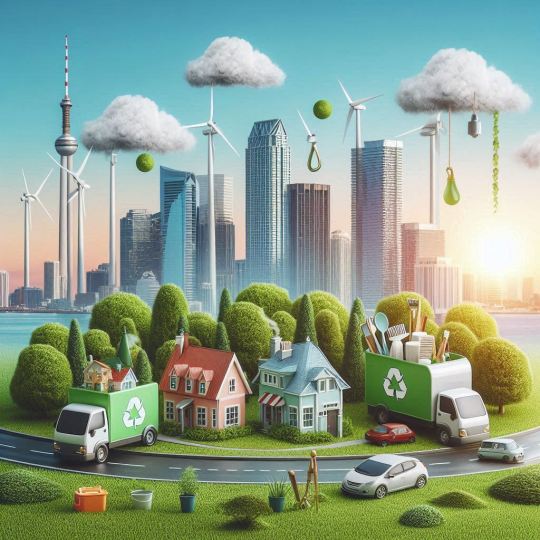
Eco-Friendly Housekeeping Options in Dade City
As more people in Dade City become conscious of their environmental impact, the demand for eco-friendly housekeeping services is on the rise. Whether you’re looking to reduce your household’s carbon footprint, create a healthier living environment, or simply embrace more sustainable practices, eco-friendly housekeeping is a great way to maintain a clean home while being kind to the planet. In this article, we’ll explore some eco-friendly housekeeping options available in Dade City and how you can incorporate them into your home cleaning routine.
Why Choose Eco-Friendly Housekeeping?
Eco-friendly housekeeping focuses on using non-toxic, biodegradable, and sustainable cleaning products and methods. It aims to minimize the environmental impact of traditional cleaning practices, which often involve harsh chemicals and non-recyclable packaging. Here are some key reasons to make the switch:
Healthier Home Environment Traditional cleaning products often contain harmful chemicals that can affect indoor air quality and lead to respiratory issues or allergic reactions. Eco-friendly products use natural ingredients that are safe for you, your family, and your pets.
Reduced Environmental Impact Eco-friendly housekeeping reduces the need for synthetic chemicals, many of which end up in waterways, harming aquatic life. By using biodegradable products and reducing waste, you help protect Dade City’s local environment and beyond.
Sustainable Practices Eco-friendly cleaning methods encourage the use of reusable tools like microfiber cloths and refillable cleaning containers, reducing single-use plastics and waste. It’s a great way to contribute to the planet's well-being.
Eco-Friendly Housekeeping Products and Practices in Dade City
Non-Toxic and Biodegradable Cleaning Products Many traditional cleaning products contain harmful chemicals that can pollute the air and water. Switching to biodegradable and non-toxic cleaning supplies can make a significant difference in reducing your environmental impact. Look for local stores in Dade City that carry green cleaning products or consider ordering from online eco-friendly retailers.
Some well-known eco-friendly cleaning brands include:
Seventh Generation
Mrs. Meyer’s Clean Day
Ecos
Method
Use of Reusable Cleaning Tools Instead of disposable paper towels, switch to reusable microfiber cloths for cleaning. Microfiber cloths are effective at trapping dirt and dust, reducing the need for harsh chemicals. They’re washable, durable, and can be used repeatedly without losing their cleaning power.
Additionally, opt for reusable mop heads and cleaning pads that can be washed after each use. These sustainable tools help reduce the amount of waste generated from traditional cleaning products.
Natural Homemade Cleaning Solutions Making your own cleaning products is another eco-friendly option that reduces packaging waste and allows you to control the ingredients used. Common household ingredients like vinegar, baking soda, lemon, and essential oils can be used to create effective, natural cleaning solutions.
Simple DIY Eco-Friendly Cleaner Recipes:
All-purpose cleaner: Combine 1 cup of white vinegar, 1 cup of water, and 10 drops of tea tree essential oil in a spray bottle.
Glass cleaner: Mix 1 part water, 1 part vinegar, and a few drops of lemon juice for streak-free windows.
Bathroom cleaner: Create a paste using baking soda and water to scrub bathroom surfaces.
Green Cleaning Services in Dade City If you prefer professional help, there are eco-friendly housekeeping services in Dade City that specialize in using sustainable cleaning methods. These services typically use green cleaning products and practices to maintain a clean home without causing harm to the environment.
Look for cleaning services that advertise their commitment to eco-friendly practices and verify the types of products and methods they use. Many local companies are increasingly offering green cleaning options in response to growing customer demand for environmentally-conscious choices.
Energy-Efficient Cleaning Methods Cleaning your home doesn’t just involve products; it also includes the methods you use. Consider energy-efficient appliances such as steam cleaners that require less water and electricity. Additionally, by using natural light for cleaning during the day and cutting down on unnecessary use of lights or machines, you can reduce your overall energy consumption.
Water Conservation Dade City residents can conserve water while cleaning by using low-flow or dual-flush toilets, fixing leaks, and avoiding excessive water usage during cleaning tasks. Using water-saving cleaning tools, such as mop systems that require less water, can also help.
Proper Disposal of Cleaning Products and Containers Properly dispose of any non-eco-friendly cleaning products, used containers, or packaging. Many products contain harmful substances that can pollute the environment, so it’s essential to recycle or dispose of them responsibly. Opt for packaging made from recycled materials whenever possible.
Where to Find Eco-Friendly Housekeeping Products and Services in Dade City
Several local stores in Dade City offer eco-friendly cleaning products and supplies. You can also find sustainable brands at major retailers and online stores. Here are a few places you might explore:
Health Food Stores and Local Markets Health-conscious grocery stores in Dade City may carry eco-friendly cleaning supplies, including all-natural cleaning products, reusable items, and organic ingredients for homemade cleaners.
Farmers’ Markets and Eco-Friendly Shops The Dade City Farmers' Market or local eco-friendly stores may offer cleaning products made with sustainable ingredients. Supporting these local businesses helps promote sustainability within the community.
Online Eco-Friendly Retailers Online platforms like Amazon, Grove Collaborative, and EarthHero are excellent resources for purchasing eco-friendly housekeeping products. Many of these platforms offer home delivery in Dade City, making it convenient to stock up on sustainable items.
Eco-Cleaning Services in Dade City Several professional cleaning services in the area specialize in green cleaning. Look for reviews and recommendations to find a trustworthy service that uses environmentally friendly products and techniques.
Conclusion
Eco-friendly housekeeping is more than just a trend; it’s a sustainable practice that benefits both your home and the planet. By using natural cleaning products, reusable tools, and water- and energy-saving techniques, you can maintain a cleaner home while contributing to a healthier environment in Dade City. Whether you choose to make your own cleaning solutions or hire a green cleaning service, going eco-friendly is a step toward creating a safer, more sustainable world. Make the change today and embrace a cleaner, greener future!
House cleaning Zephyrhills FL
Housekeeping Dade city
Housekeeping Zephyrhills
Commercial cleaning services Dade city
#housecleaningservices#housecleaningservice#usa#dadecityflorida#dadecitymx#wesleychapel#dadecity#wesleychapelfl#wesleychapelmoms#wesleychapelnails
0 notes
Text
Top Renovation Trends for Luxury Villas & Penthouses in Dubai
Dubai is known for its opulence and architectural brilliance, and homeowners are constantly looking for innovative ways to enhance their properties.
Whether you own a villa in Palm Jumeirah or a penthouse in Downtown Dubai, staying updated with the latest renovation trends is essential for increasing property value and elevating the living experience.
Here are some of the top home improvement trends shaping luxury renovations in Dubai.
1. Smart Home Integration
Modern luxury properties are integrating cutting-edge smart home technology.
From automated lighting and climate control to AI-driven security systems, smart home integration is a must-have.
Homeowners seek seamless automation that enhances convenience, security, and energy efficiency.
2. Sustainable and Eco-Friendly Upgrades
Sustainability is at the forefront of luxury renovations. Many homeowners are opting for eco-friendly materials, energy-efficient appliances, and solar panel installations.
These green renovations not only reduce the carbon footprint but also contribute to long-term savings on utility bills.
3. High-End Kitchen Transformations
The kitchen remains a focal point in luxury villas and penthouses. Open-concept kitchens with premium countertops, high-tech appliances, and custom cabinetry are trending.
Many residents are choosing marble or quartz surfaces, along with state-of-the-art induction cooktops and smart refrigerators for a futuristic touch.
4. Spa-Inspired Bathrooms
Luxury renovations now emphasize creating spa-like bathrooms with high-end fixtures, rain showers, and freestanding soaking tubs. Heated flooring, ambient lighting, and bespoke vanities add to the sophisticated aesthetic.
5. Bespoke Interior Painting & Finishes
A well-executed paint job can transform any space, making Professional painters in Dubai essential for luxury home makeovers. Homeowners are leaning towards neutral palettes with bold accent walls, textured finishes, and metallic touches to elevate the ambiance of their homes.
6. Outdoor Living Enhancements
Dubai’s climate allows for year-round outdoor living, making landscaping and outdoor entertainment areas a priority.
Many villas now feature infinity pools, outdoor kitchens, and lush green spaces.
Investing in high-quality decking, pergolas, and water features creates an elegant outdoor oasis.
7. Open-Concept Living Spaces
Maximizing space with an open-concept layout is a growing trend. Luxury homeowners are removing unnecessary walls to create seamless transitions between living areas.
This design not only enhances natural light but also creates a more expansive and inviting atmosphere.
8. Custom Walk-In Closets
A dedicated walk-in closet with personalized storage solutions is a must for luxury homes.
Custom shelving, elegant lighting, and high-end materials ensure functionality and sophistication, reflecting the owner’s style and preferences.
9. High-Quality Flooring Upgrades
Replacing outdated flooring with high-quality materials such as Italian marble, hardwood, or polished concrete adds value and elegance to luxury properties.
Heated flooring is also becoming increasingly popular in Dubai’s premium residences.
10. Expert Renovation Services
To achieve a flawless transformation, homeowners rely on a renovation expert in Dubai.
From planning and design to execution, professionals ensure that every detail aligns with the client’s vision.
Partnering with a trusted maintenance company in Dubai can further enhance property upkeep and longevity.
Conclusion
Luxury renovations in Dubai are all about sophistication, innovation, and functionality.
Whether it's a full-scale renovation or a simple home improvement, staying ahead of trends ensures that your property remains stylish and valuable.
Engaging renovation services in Dubai with expertise in high-end transformations will help bring your vision to life with precision and excellence.
#home maintenance#home improvement#cleaning services#painting#renovation#kitchen#renovation trends#interior design#home interior
0 notes
Text
Top 10 Global Cuisine Trends in Event Catering This 2025
The catering Melbourne industry is continuously evolving, with 2025 ushering in a new wave of trends that merge tradition with innovation, sustainability with flavour, and culture with creativity. As event planners strive to deliver memorable experiences, food plays a pivotal role in setting the tone and enhancing the atmosphere. From global flavours to sustainable approaches, here are the top 10 global cuisine trends shaping the world of event catering this year:
1. Fusion Flavours: Blending Global Cuisines
Fusion cuisine has long been a culinary trend, but in 2025, it’s expected to take a more adventurous turn. With a heightened interest in cross-cultural collaboration, chefs are increasingly combining the culinary traditions of various regions to create innovative dishes. Guests can indulge in unique combinations like Korean BBQ tacos, sushi burritos, and Mediterranean-inspired pizza topped with tzatziki and falafel. The possibilities are endless, as fusion cuisine allows for the blending of spicy, savoury, sweet, and sour profiles into one dish. For example, Mexican street corn (elote) might be paired with Japanese miso butter or Moroccan-spiced lamb could make its way into a Brazilian-style empanada. These fusion dishes serve as conversation starters while showcasing culinary expertise.
2. Sustainable and Plant-Based Menus
As more people prioritise health and the environment, sustainable and plant-based menus are becoming a cornerstone of event catering. Veganism and plant-based diets have evolved far beyond simple salads or veggie platters, and now feature creative, hearty options. In 2025, expect plant-based options that are flavourful, colourful, and satisfying. For instance, jackfruit, which mimics pulled pork, could be featured in sliders or tacos, while cauliflower steaks could serve as a main course alternative to meat. Sustainability will also take centre stage, with caterers opting for locally grown organic produce, seasonally sourced ingredients, and eco-friendly packaging to reduce their carbon footprint. Desserts like vegan chocolate mousse made from avocado or coconut milk-based ice cream will continue to satisfy sweet cravings while being mindful of the planet.
3. Street Food-Inspired Buffets
Street food isn’t just for casual dinners—it’s becoming a beloved feature of upscale events. Offering an informal, interactive experience, street food-inspired catering lets guests sample small portions of a wide variety of dishes from around the world. From Korean bibimbap bowls and Thai satay skewers to Italian arancini and Mexican tacos, this trend allows for customisation and fun interaction. Food stations or food trucks featuring international street food will dominate event spaces in 2025, providing guests with a chance to interact with the food, watch it being prepared, and even add their own toppings or spices. This trend is particularly well-suited for festivals, corporate parties, or weddings looking for a lively and vibrant culinary atmosphere.
4. Interactive Food Stations
Guests love being part of the action, and interactive food stations are the perfect way to engage them. Whether it's a "build-your-own" ramen bar, a make-your-own taco station, or a sushi roll customisation table, these stations offer something for everyone. They also create a sense of excitement and social interaction. Food stations allow guests to customise their meals, choose their ingredients, and even learn a thing or two about the preparation process. Technology is making this trend even more dynamic. For example, smart salad bars allow guests to use touchscreen ordering systems to design their bowls, while 3D-printed desserts or intricate edible art can provide a high-tech, show-stopping experience. This trend enhances the dining experience by combining food and entertainment.
5. Middle Eastern and Mediterranean Influence
The flavours of the Middle East and Mediterranean continue to captivate palates worldwide, and 2025 will see them integrated into event catering menus more than ever. Rich in spices, herbs, and fresh ingredients, these cuisines offer a deliciously fragrant mix of dishes that cater to various dietary needs. Mezze platters filled with hummus, baba ganoush, tabbouleh, and falafel are becoming staples at events, offering guests small bites that celebrate regional ingredients. Expect dishes like shawarma wraps, kebabs, and grilled seafood infused with spices like cumin, coriander, and sumac. Mediterranean-inspired salads, grilled vegetables, and tzatziki sauces will also be featured heavily. These flavorful dishes are not only tasty but also incredibly nutritious, providing guests with healthy options that can easily be tailored to dietary preferences.
6. Zero-Waste Catering
As the world becomes more conscious of environmental issues, the demand for zero-waste catering is growing. Caterers in 2025 will focus on minimising waste by utilising every part of their ingredients, from root-to-stem cooking to finding creative uses for food scraps. This might include turning vegetable scraps into flavorful broths or using citrous peels to make zesty garnishes. In addition to reducing waste, zero-waste catering practices will extend to packaging. Expect biodegradable or compostable plates, cups, and cutlery to replace single-use plastic items, contributing to an overall reduction in landfill waste. This trend aligns with sustainability efforts and meets the growing demand for environmentally friendly practices, all while providing guests with delicious meals.
7. Hyperlocal and Regional Specialities
2025 will see a significant rise in hyperlocal and regional cuisine, as people increasingly seek authentic culinary experiences that reflect the region they’re in. Event caterers will focus on locally sourced ingredients and traditional recipes that highlight the unique flavours of the area. From farm-to-table dinners featuring seasonal produce to locally sourced fish and meats, these menus emphasise freshness, sustainability, and community support. Regional specialities like South Carolina BBQ, New England clam chowder, or the famous French baguette will be front and centre at events. The goal is to create an immersive experience that introduces guests to the distinct culinary culture of the area.
8. High-Quality Street Food for Luxury Events
Luxury events are taking street food to the next level, offering upscale versions of beloved comfort foods. Think gourmet dumplings with truffle oil, lobster rolls in fresh brioche buns, or wagyu beef sliders with wasabi aioli. The idea is to elevate the humble street food experience while maintaining its accessibility and familiarity. High-quality ingredients, expert preparation, and artistic presentation transform these classic favourites into indulgent, refined dishes. Luxury event caterers are creating elaborate food displays with intricate details and top-tier ingredients that bring street food into the world of fine dining.
9. Global Dessert Innovations
Dessert is a critical part of any event, and in 2025, it's going global. While traditional sweets like French macarons, Italian gelato, and Mexican churros will always have a place, caterers are taking global dessert traditions to new heights. In addition to iconic treats from around the world, 2025 will see the rise of interactive dessert stations where guests can personalise their sweets with international flavours. Imagine assembling your own sundae with exotic fruits, international syrups, and unique toppings, or creating your own Japanese-inspired matcha cake with personalised fillings. Desserts will be as much about the experience as they are about the flavors, with global influences bringing fresh and exciting options to event menus.
10. Wellness-Centred Menus
Health consciousness is a key driver in 2025's event catering scene. Guests are increasingly interested in eating food that nourishes both their bodies and minds, without sacrificing taste. Wellness-centred menus feature ingredients that are nutrient-rich and have specific health benefits, such as antioxidant-packed acai bowls, energy-boosting smoothies, and protein-rich quinoa bowls. Expect to see more superfoods incorporated into event menus—ingredients like chia seeds, spirulina, turmeric, and matcha are being used to create dishes that are as beneficial as they are delicious. Guests at wellness-focused events may even have the opportunity to sample dishes that promote gut health or help to boost the immune system.
The catering world in 2025 is driven by diverse global flavours, sustainability, and an elevated experience that engages guests on all levels. Whether through fusion cuisine, plant-based innovation, or interactive food stations, the goal is to provide a culinary journey that is unforgettable. These trends reflect the increasing desire for personalisation, healthier choices, and a focus on environmental responsibility. For event planners and caterers, staying ahead of these trends means delivering an extraordinary experience that aligns with modern tastes and values.
By embracing these exciting trends, catering services will be able to bring the world’s best flavours to any event while leaving guests with a deeper appreciation of the culinary arts.
0 notes
Text
youtube
Coke’s Biggest Secret. Discover how Coca-Cola, born in 1886 with a single refreshing recipe, became a global symbol of happiness, pioneering marketing campaigns and sustainable practices along the way. https://www.youtube.com/channel/UC3o4B5eoAcewBjxvaeC5Rxg?sub_confirmation=1 Founded in 1886 by Dr. John Pemberton, Coca-Cola started as a simple concoction aiming to offer a unique, refreshing taste. Back then, carbonated beverages were a novelty, yet the brand quickly gained traction thanks to creative marketing strategies that spotlighted its distinct flavor and promise of refreshment. As word spread, Coca-Cola became more than just a soda; it was an experience capturing the essence of American culture at the turn of the century. One of the brand’s most memorable moves was the Santa Claus campaign—turning a jolly character in red and white into a near-universal holiday icon. This ingenious tactic rooted Coca-Cola in popular culture, forging a strong emotional bond with consumers. By the mid-20th century, Coke’s focus on inclusive ads, like teaching the world to sing, boosted its image as not merely a drink but a symbol of joy and togetherness. Over time, Coca-Cola broadened its product line with options like Diet Coke and Coca-Cola Zero, appealing to changing consumer preferences. Their global outlook meant shipping beverages worldwide, as well as localizing flavors to suit regional palates. Yet, success also brought new challenges, including environmental concerns. In response, Coca-Cola ramped up community and sustainability efforts, aiming to reduce its carbon footprint and create positive social impact. These initiatives, spanning packaging improvements to water stewardship, showcase the brand’s commitment to responsible growth. Today, Coca-Cola stands as a beacon of global marketing excellence—its vibrant red packaging and curly script recognizable in even the farthest corners of the world. More than a century later, the brand still captures hearts with simple elements like friendly polar bears and shareable bottle messages. Yet underneath the fun and fizz lies a strategic history of forward-thinking campaigns, innovative product expansions, and a deep understanding of consumer values. That combination turned an 1886 soda formula into a global emblem of happiness—and it continues to evolve with each generation. 📂 For The Latest Stories on luxury travel, getaways goods, the rich, companies, Top 10’s, biographies, Lavish History, news, and more 📂 https://www.youtube.com/@Lavishangle 🎉 For business enquires contact us at full4sog (@) gmail dot com 💬 Don't forget to leave your thoughts in the comments below. We love hearing from you! 😍 and hit that bell to stay updated on all new videos we release. #lavishgetaways #thelavishandaffluentangle #thelavish&affluentangle #tlaa #shorts #shortsvideo #shortsbeta #viralshorts #viral #viralreels #youtubeshorts #viralyoutubeshorts #CocaCola #GlobalIcon #BeverageIndustry #RefreshingTaste #MarketingMagic #SantaCampaign #SymbolOfHappiness #DietCoke #CokeZero #UniqueRecipe #CommunityFocus #Sustainability #CarbonatedDrinks #FizzySoda #BrandHeritage #AmericanCulture #EnvironmentalEfforts #IconicBrand #ProductExpansion #GlobalRecognition #HolidayTraditions #EmotionalBond #1886Origins #ColaConquest #CokeAndSmile via The Lavish & Affluent Angle https://www.youtube.com/channel/UC3o4B5eoAcewBjxvaeC5Rxg January 28, 2025 at 10:00PM
#lavishgetaways#luxurylifestyle#luxuryhotels#luxurytravel#luxuryliving#traveltheworld#travelgoals#Youtube
0 notes
Text
How Air Source Heat Pump Installation Benefits Hampshire Homeowners

As homeowners in Hampshire continue to seek sustainable and cost-effective ways to heat their properties, air source heat pumps have emerged as a highly advantageous solution. This innovative technology not only supports the environment but also offers significant financial and practical benefits for modern households. Below, we delve into the compelling reasons why air source heat pump installation is an excellent investment for Hampshire residents.
What Are Air Source Heat Pumps?
Air source heat pumps (ASHPs) are a renewable heating system that extracts heat from the outside air, even in cold weather, and transfers it into your home. These systems are highly efficient and are capable of heating water and providing space heating throughout the year. By utilizing the ambient air, ASHPs significantly reduce reliance on fossil fuels, making them a greener alternative to traditional heating methods.
Types of Air Source Heat Pumps
Air-to-Water Heat Pumps: Ideal for providing heating and hot water, these systems are compatible with underfloor heating and radiators.
Air-to-Air Heat Pumps: These pumps deliver warm or cool air directly into living spaces, offering an energy-efficient solution for maintaining a comfortable indoor climate.
Environmental Benefits of Air Source Heat Pumps
Hampshire homeowners are increasingly aware of the impact of their choices on the environment. By installing an ASHP, residents contribute to reducing carbon emissions while enjoying an efficient heating solution. Here are the key environmental advantages:
Reduction in Carbon Footprint: Unlike oil or gas boilers, air source heat pumps use renewable energy, leading to significantly lower greenhouse gas emissions.
Compliance with Net Zero Goals: The UK government aims to achieve net zero carbon emissions by 2050, and ASHPs play a pivotal role in this initiative.
Minimized Resource Depletion: As ASHPs rely on ambient air, they consume less non-renewable energy, conserving resources for future generations.
Cost-Saving Benefits of Installing an Air Source Heat Pump
Investing in an air source heat pump can lead to substantial financial savings for Hampshire homeowners in the long run. While the initial installation cost may seem significant, the operational efficiency and available incentives make it a worthwhile expenditure.
Lower Energy Bills: ASHPs operate on electricity but require significantly less energy compared to conventional systems, leading to reduced utility costs.
Government Incentives: Programs such as the Boiler Upgrade Scheme (BUS) provide grants for ASHP installations, helping to offset upfront costs.
Longevity and Durability: With proper maintenance, air source heat pumps can last up to 20 years, providing long-term value.
Comparing Costs with Traditional Heating Systems
Heating System
Average Annual Cost (£)
Lifespan (Years)
Environmental Impact
Gas Boiler
750 – 1,500
10 – 15
High
Oil Boiler
800 – 2,000
10 – 15
Very High
Air Source Heat Pump
400 – 800
15 – 20
Low
Energy Efficiency: A Key Advantage
Air source heat pumps boast impressive energy efficiency, with a coefficient of performance (COP) that often exceeds 3. This means that for every unit of electricity used, the system generates three or more units of heat. Such efficiency ensures Hampshire homeowners can maintain comfortable indoor temperatures without excessive energy consumption.
Seasonal Performance
Winter Efficiency: ASHPs are designed to operate effectively even in sub-zero temperatures, making them suitable for Hampshire’s climate.
Year-Round Use: Many systems provide both heating and cooling, offering an all-in-one solution for temperature control.
Ease of Installation and Maintenance
Air source heat pumps are relatively simple to install compared to other renewable heating systems. For Hampshire homeowners, this translates into minimal disruption and faster adoption of eco-friendly heating.
Installation Process: A professional installer will typically require 2-3 days to complete the setup, depending on the system type and property specifications.
Low Maintenance Requirements: Regular servicing—usually once a year—ensures optimal performance and extends the lifespan of the system.
Noise Levels: Modern ASHP models are designed to operate quietly, ensuring minimal disturbance to you and your neighbors.
Enhanced Property Value
As the demand for energy-efficient homes rises, properties equipped with renewable technologies like air source heat pumps are becoming increasingly attractive to buyers. Hampshire homeowners who invest in ASHPs may benefit from higher property valuations and quicker sales in the future.
Energy Performance Certificates (EPCs): Installing an ASHP can improve your property’s EPC rating, which is a key factor for potential buyers.
Future-Proofing: By adopting renewable heating solutions, homeowners can align their properties with upcoming regulations and market trends.
Are Air Source Heat Pumps Suitable for Every Hampshire Home?
While air source heat pumps are versatile, their suitability depends on several factors:
Property Insulation: Homes with adequate insulation will benefit most from ASHP efficiency.
Outdoor Space: These systems require an external unit, so sufficient outdoor space is necessary.
Existing Heating Systems: Integration with underfloor heating or low-temperature radiators enhances performance.
Consulting a qualified installer is essential to assess your home’s compatibility and design the most effective system.
Conclusion
Air source heat pumps represent a transformative opportunity for Hampshire homeowners to embrace sustainable, cost-effective, and future-proof heating solutions. With their environmental benefits, energy efficiency, and financial incentives, ASHPs are a compelling choice for reducing carbon footprints while enhancing home comfort. Investing in this technology today ensures long-term savings and alignment with the UK’s green energy goals.
#air source heat pump#heat pump installation#heat pump repair#heat pump maintenance#renewable energy#hampshire#uk
0 notes
Text
Sustainable Shopping: How Retag Promotes a Greener Planet?

The idea of sustainability has become the overwhelming focus in our day-to-day routines as environmental worries get more prominent today. Each choice we make, from what we eat to what we wear, affects the climate.
Looking for Christian Dior bags is one region where users might make a massive difference. Here comes Retag, a site that encourages eco-friendly and sustainable shopping while at the same time furnishing fashion-forward individuals with an eco-friendly and innovative shopping choice
The Environmental Impact of Fast Fashion
One of the most polluting businesses on the planet is often mentioned as the fashion business. Clothing production has a significant carbon impression because of water-intensive cotton cultivation and the involvement of toxic colors in fabrics. This issue is exacerbated by the quick fashion model, which advances the fast turnover of economical, stylish clothing.
Every year, fast fashion creates more than 92 million tons of material waste, generally discarded in landfills. In addition to trash, the area contributes typically 10% of the world's carbon emissions. There is a critical requirement for practical options since manufactured fibers, toxic chemicals, and microplastics in materials further contaminate biological systems.
How Retag Promotes a Greener Planet
1. Buying Pre-Loved Items
Retag makes it simple for environmentally aware consumers to locate premium used items like Christian Dior bags at a much-reduced cost. The platform ensures something for everyone by selecting a broad range of styles, from modern pieces to vintage finds.
Retag's dedication to quality is what makes it unique. Each item is carefully examined to satisfy the platform's requirements. This emphasis on quality guarantees buyers will obtain fashionable and long-lasting goods, demonstrating that buying used doesn't mean sacrificing quality.
2. Selling and Buying Made Simple
Retag offers a platform for people to sell or buy gently used Christian Dior bags, empowering them to clear their closets in a sustainable way. This extends the lifespan of clothing by keeping it in circulation and assisting consumers in earning additional money.
The procedure is transparent, easy to use, and efficient. While buyers have a flawless browsing experience, sellers can post things in a matter of minutes.
3. Eco-Friendly Packaging
Retag packs all of its products in environmentally responsible ways in keeping with its sustainability purpose. To further lessen their influence on the environment, the platform encourages both buyers and sellers to use biodegradable materials instead of plastic. You can also search for Christian Dior bags price.
Why Choose Sustainable Shopping?
There are advantages to sustainable buying practices beyond just lessening your carbon footprint. The following are compelling reasons to think about:
Financial Savings: Customers can save money without sacrificing quality or style when they shop secondhand because it's frequently less expensive than purchasing new.
Unique Finds: A wealth of vintage and one-of-a-kind products unavailable in traditional shops may be discovered on pre-owned Christian Dior handbags such as Retag.
Ethical Consumerism: Supporting eco-friendly websites like Retag is consistent with the principles of conscious consumerism, which holds that every purchase helps to improve the planet's future.
Retag's Role in the Circular Economy
Reusing, recycling, and cutting waste are all given top priority in the circular economy idea. It contrasts with the "take-make-dispose" linear model that has dominated the industry for many years. Retag is essential to this system since it:
Extending Product Lifecycles: Retag minimizes the demand for fresh manufacture by ensuring that Christian Dior handbags last as long as possible.
Promoting Recycling: To ensure there is as little waste as possible, items that are no longer usable are sent to recycling programs. You can also search for Christian Dior bags price.
Fostering Community: Retag builds a community of people who share similar values and are dedicated to making sustainable decisions, demonstrating that even small modifications can have a significant effect when multiplied.
A Greener Future with Retag
A more extensive development towards a more economical future incorporates Retag's drives. Clients offer areas of strength for enterprises about the worth of supportability by utilizing platforms like Retag. Retag users are effectively making the world greener with each purchase, deal, or exchange.
Moreover, Retag's efforts extend beyond business. The website funds educational drives to increment public understanding of the adverse consequences fast style has on the climate and the benefits of manageable shopping. Retag is making a supportable culture that requests the present shoppers through writing for a blog, workshops, and partnerships with eco-friendly organizations.
Conclusion
Sustainable purchasing is a need in this day and age, not a passing trend. By working with the adoption of eco-friendly practices by clients, platforms like Retag are assisting with making a more feasible world.
By choosing Retag, you're making a statement about buying Christian Dior bags. Consider the item's environmental effect whenever you add it to your closet. Think about Retag, where each buy adds to an all the more harmless to the ecosystem world.
#authentic pre loved designer bags#authentic pre owned bags#Pre-Owned Authentic Luxury Handbags#2nd hand bags for sale#authentic pre owned luxury handbags#buy second hand handbags#authentic pre owned chanel bags#second hand louis vuitton sunglasses#Pre-owned Designer Handbags#Louis Vuitton Pre-Owned Sunglasses#used rado watches#used omega watches#used watches for sale#second hand rolex#watches second hand rolex#watches omega used#second hand rolex watches#used rolex for sale#pre owned rolex watches#second hand omega watches#used rolex watches#2nd hand ysl bag#refurbished rolex watches#pre used omega watches#refurbished watches rolex#hermes bag second hand#hermes used handbags#2nd hand hermes bags#used cartier watch#used hublot watches
0 notes